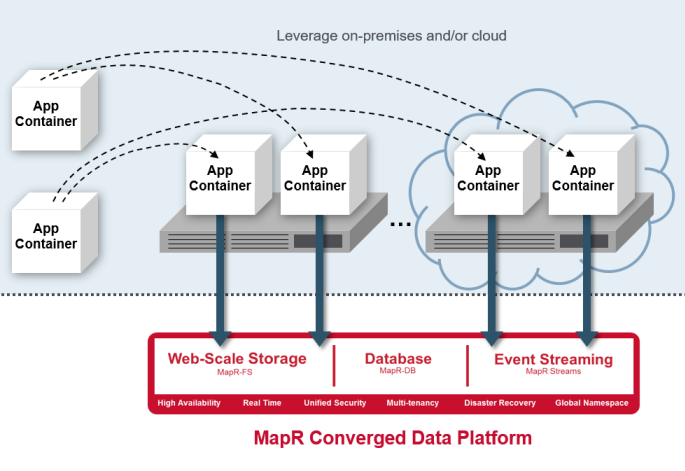 BIG DATA
BIG DATA
 BIG DATA
BIG DATA
 BIG DATA
BIG DATA
MapR Technologies, Inc. is attempting to cash in on container mania, announcing what it calls the industry’s first persistent storage system for containers that includes stateful access to files, database tables and message streams from any location.
The company does this through the MapR Persistent Client Container, called PACC, a lightweight containerized application that makes it possible for applications and microservices to access a MapR data store.
MapR is addressing a characteristic of containers that has hindered their use in some production environments. Containers are designed to be transient in nature, which means they don’t provide natively for persistent storage. While it’s possible to provision storage to containers, the process is manually intensive compared to the automatic provisioning supported in virtual machines.
This issue has become a stumbling block for customers that are adopting containers in a big way, said Dale Kim, senior director of industry solutions at MapR. He cited one financial services company that has 75,000 nodes devoted to applications that can’t realistically be deployed in containers because “the IT team would have to provision them individually to talk to external storage,” he said.
The MapR approach provides a lightweight Posix client that’s pre-configured with a file system, database and streams support. Other tools, such as Apache Drill, will be supported in future versions based upon customer demand, Kim said. The client uses shared, multi-tenant data and streaming services and provides for scale-out NoSQL key value and document database storage for operational and lightweight analytics. Authentication is handled at the container level, and there’s extensible support for application layers. MapR is making PACCs available in the Docker Hub app store and as a customizable Dockerfile.
“This will let you deploy on any node within your organization, even if they aren’t provisioned with MapR,” Kim said. “Within the container, it looks like local storage. You can run other applications that write to disk through the MapR client.” Previously, files would have to be written to a local disk and then copied to the data store on the network, he said. IT can maintain the flexibility to decide which containers do and don’t get persistent storage by keeping two types of containers on hand: one with and one of without MapR support.
The software is available today. It will be licensed on a per-container deployment basis, but details hadn’t been ironed out at the time of the press preview. Kim said pricing will be announced this week.
Support our mission to keep content open and free by engaging with theCUBE community. Join theCUBE’s Alumni Trust Network, where technology leaders connect, share intelligence and create opportunities.
Founded by tech visionaries John Furrier and Dave Vellante, SiliconANGLE Media has built a dynamic ecosystem of industry-leading digital media brands that reach 15+ million elite tech professionals. Our new proprietary theCUBE AI Video Cloud is breaking ground in audience interaction, leveraging theCUBEai.com neural network to help technology companies make data-driven decisions and stay at the forefront of industry conversations.